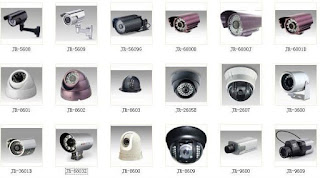What is CCTV?
 |
| Add caption |
Closed Circuit Television (CCTV) is a
system where the circuit in which the video is transmitted is closed and
all the elements (camera, display monitors, recording devices) are
directly connected. This is unlike broadcast television where any
receiver that is correctly tuned can pick up and display or store the
signal. Such specialized systems are not subject to regulation by the
Federal Communications Commission (FCC); however, security cameras using
scrambled radio waves are in fact subject to common carrier tariffs and
FCC conditions of service. In the past, these signals would be
transmitted to a monitor equipped with a videocassette recorder, but
these have been all but totally replaced by digital video recorder (DVR)
systems that can store far more video and back up data automatically.
What is CCTV Used For?
The most common use of CCTV is in security camera systems.
They’ve been found for years in areas like large retail shops, banks,
and government institutions. Thanks to reduced costs in the manufacture
of cameras and video recording equipment, camera systems are becoming
more and more commonplace in smaller businesses, and even private homes.
Other Uses of CCTV
 CCTV has become ubiquitous in large
cities, along major highways, and areas that host large events. On
streets and roads, CCTV is often used in traffic law enforcement, but
it’s used to monitor traffic patterns, allowing emergency services to
react quickly to accidents and for maintenance departments to better
plan necessary construction projects. In hotels, stadiums, and
convention centers, CCTV is often used in private television networks,
broadcasting sporting events or special events throughout their
facilities.
CCTV has become ubiquitous in large
cities, along major highways, and areas that host large events. On
streets and roads, CCTV is often used in traffic law enforcement, but
it’s used to monitor traffic patterns, allowing emergency services to
react quickly to accidents and for maintenance departments to better
plan necessary construction projects. In hotels, stadiums, and
convention centers, CCTV is often used in private television networks,
broadcasting sporting events or special events throughout their
facilities.Most airports and train stations throughout the world have installed security cameras connected to CCTV systems with the goal of combating terrorism. These video feeds are constantly monitored by local and international law enforcement agencies in an effort to keep travellers safe.
CCTV Cameras
Any camera that broadcasts a signal can
be attached to a CCTV system, whether it’s wired or wireless, but they
are most often associated with high-end surveillance cameras. Pan/tilt/zoom (PTZ) cameras
allow a user to remotely control a camera. The type of lens used will
depend on the application and area the camera will be installed
-
Fixed aperture lenses cannot be adjusted for distance or lighting considerations. Lower in cost than other lenses, these are usually sufficient for indoor installations where lighting will be consistent.
-
There are two types of adjustable iris lenses. Manual iris lenses can be adjusted for changes in lighting conditions, but it must be done manually. Auto iris camera lenses can sense changes in lighting in the area they observe and will automatically make adjustments so they provide the best picture possible. These are usually the best choice for outdoor installations.
- Manual zoom lenses allow
you to adjust the focus area on a camera by hand. If you want to be
able to change focus remotely, motorized zoom lenses are also available,
but more costly. A third type of zoom lens, automatic zoom, can
automatically focus on objects moving within their view.
CCTV Systems and Hidden Cameras
 Hidden cameras
can be integrated into any CCTV network, and often are. They allow
users to record criminal behavior when criminals are on the lookout for
standard security cameras. They can be more effective in capturing video
evidence, since they are harder to avoid, but sacrifice the deterrent
properties of traditional CCTV cameras. On the other end of the
spectrum, dummy cameras are a low-cost deterrent device, appearing to be
CCTV cams, often complete with blinking lights. Many small businesses
use dummy cams as an extra measure of security.
Hidden cameras
can be integrated into any CCTV network, and often are. They allow
users to record criminal behavior when criminals are on the lookout for
standard security cameras. They can be more effective in capturing video
evidence, since they are harder to avoid, but sacrifice the deterrent
properties of traditional CCTV cameras. On the other end of the
spectrum, dummy cameras are a low-cost deterrent device, appearing to be
CCTV cams, often complete with blinking lights. Many small businesses
use dummy cams as an extra measure of security.
